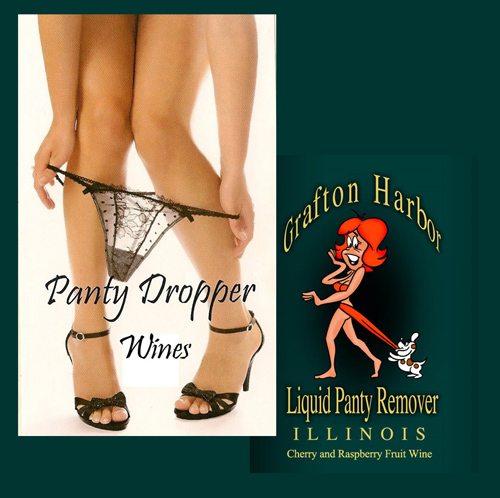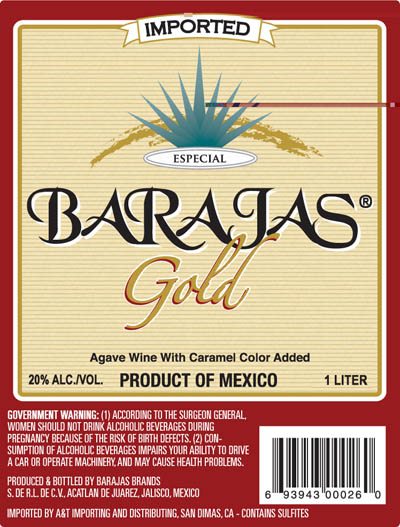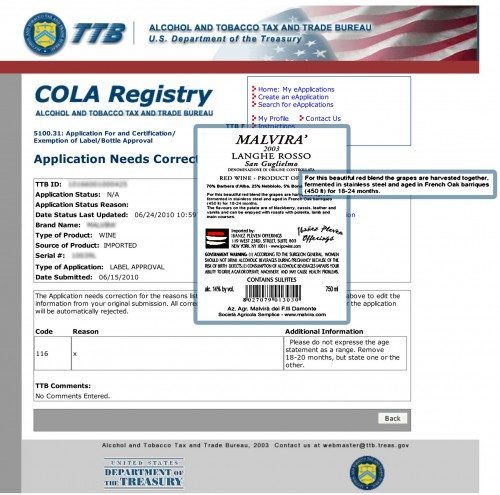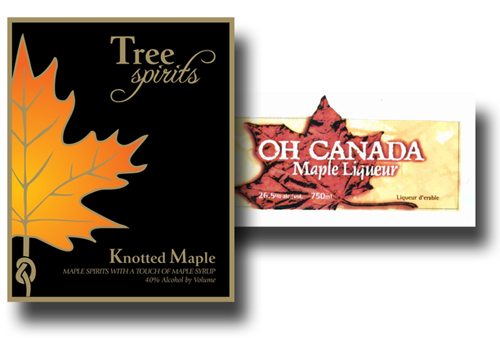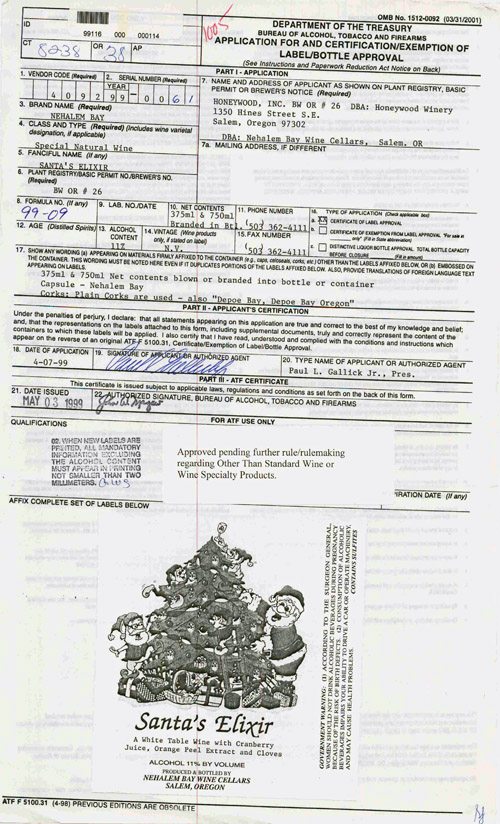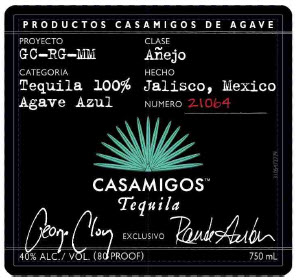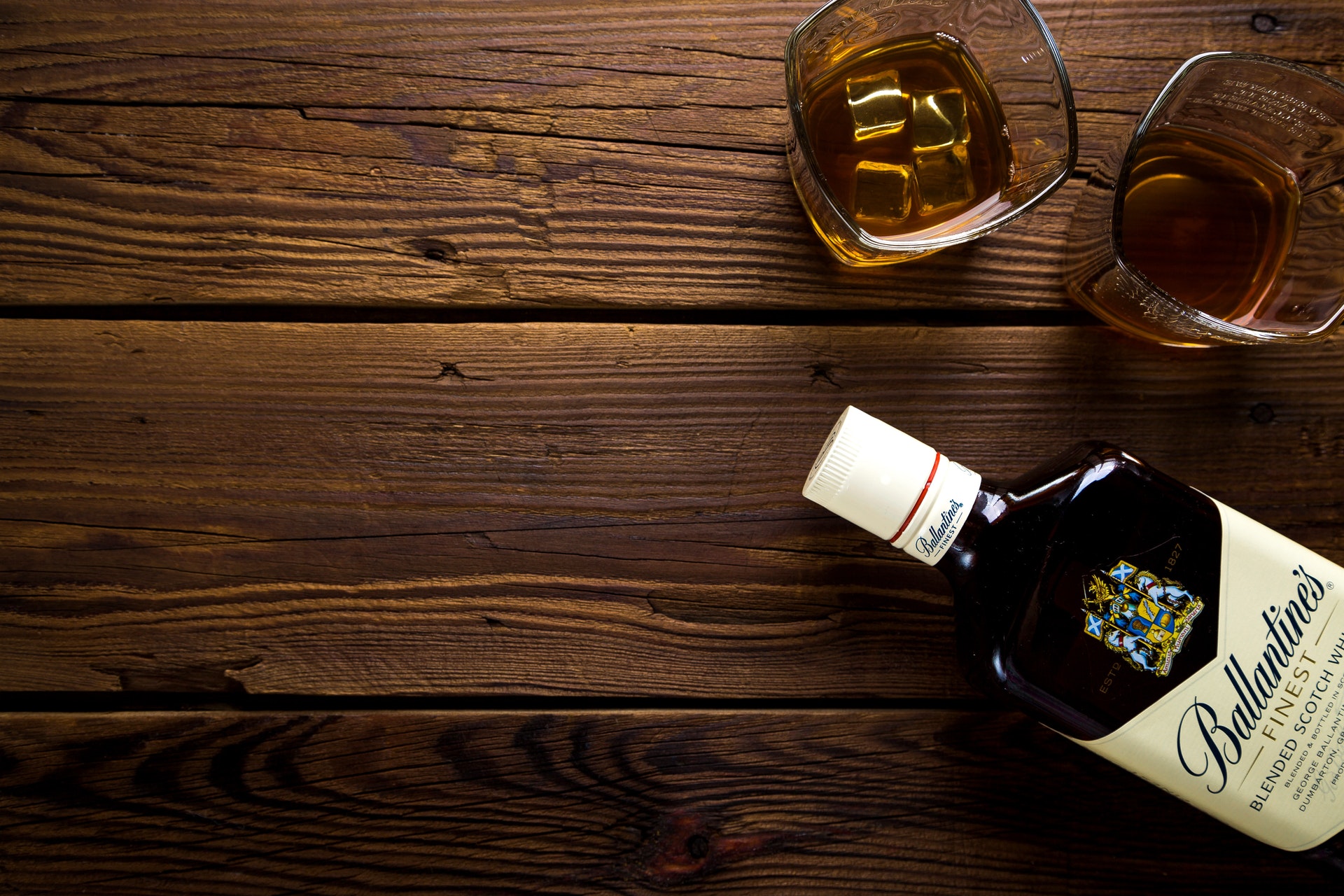First it was just the pants on the ground. Now there is a profusion of panties on the ground. And once again, alcohol beverages are not far from the root of the problem. Way back in April of 2009 we first uncovered this problem, and there is no sign of abatement in the time since then.
Panty Dropper is Late Harvest Zinfandel, produced and bottled by Christies of Sonoma, Inc. Liquid Panty Remover is Cherry and Raspberry Fruit Wine, produced and bottled by Alto Vineyards, of Alto Pass, Illinois.
Agave Wine
This post will start short but is likely to grow long over time. Very long. We will try to show the enormous range of foodstuffs from which wine is produced. With each post we will add to the list, and I predict it will grow way past 50 60. Today we add Agave wine to the list.
- Agave wine. Barajas agave wine is made in Mexico and imported by A & T Importing, of San Dimas, California.
- Avocado wine
- Banana wine
- Blueberry wine
- Buffaloberry wine
- Cantaloupe wine
- Cherry wine
- Dandelion wine
- Elder flower wine
- Fig wine
- Gooseberry wine
- Grape wine
- Jasmine fruit wine
- Kiwi wine
- Linden flower wine
- Lingonberry
- Lychee wine
- Mango wine
- Mangosteen wine
- Marionberry wine
- Onion wine
- Peach wine
- Pomegranate wine
- Pear wine
- Pepper wine
- Persimmon wine
- Pineapple wine
- Rhubarb wine
- Strawberry wine
- Tomato wine
- Watermelon wine
Age Range on Wines
This Malvira red wine happens to mention that the Barbera d’Alba blend is “aged in French Oak barriques … for 18-24 months.” Is there anything so troublesome about that? Maybe so. On a similar label (with a different age range), the above rejection shows that TTB would prefer that wine labels show the actual amount of age, rather than a range or guesstimate.
TTB did not cite any specific authority in the rejection above, but 27 CFR 4.38(f) would make it hard for the importer to win this argument. It says:
(f) Additional information on labels. Labels may contain information other than the mandatory label information … if such information complies with the requirements … and does not conflict with, nor in any manner qualify statements required by this part. In addition, information which is truthful, accurate, and specific, and which is neither disparaging nor misleading may appear on wine labels.
The stated range (six months on one and two months on the other) may be accurate and non-disparaging, but it’s not especially specific.
Maple This and That
Margie made pancakes this morning, with real maple syrup. All of which puts me in a frame of mind to ponder the delights of maple syrup.
Oh Canada Maple Liqueur is made with maple syrup and undoubtedly tastes good (because it’s made by John Hall). But if you want to go even further, toward something made entirely or almost entirely from maple syrup, Knotted Maple may fill the bill. It is Maple Spirits with Maple Syrup, and is “distilled from Maine maple syrup.” It is produced and bottled by Tree Spirits, LLC of Oakland, Maine.
For a bit more maple satisfaction, don’t forget Vermont Gold (Vodka Distilled from Maple Syrup).
Cherry Wine
This post will start short but is likely to grow long over time. Very long. We will try to show the enormous range of foodstuffs from which wine is produced. With each post we will add to the list, and I predict it will grow way past 50 60. Today we add Cherry wine to the list.
- Avocado wine
- Banana wine
- Blueberry wine
- Buffaloberry wine
- Cantaloupe wine
- Cherry wine. Made by Strawbale Winery of Renner, South Dakota.
- Dandelion wine
- Elder flower wine
- Fig wine
- Gooseberry wine
- Grape wine
- Jasmine fruit wine
- Kiwi wine
- Linden flower wine
- Lingonberry
- Lychee wine
- Mango wine
- Mangosteen wine
- Marionberry wine
- Onion wine
- Peach wine
- Pomegranate wine
- Pear wine
- Pepper wine
- Persimmon wine
- Pineapple wine
- Rhubarb wine
- Strawberry wine
- Tomato wine
- Watermelon wine
Santa's Elixir
Most people assume TTB would be okay with the second word but not the first. Actually, it’s the other way around. The federal government is okay with Santa, but is not fond of his elixir.
TTB asserts, from time to time as the issue arises, that the term “elixir” ought not to be allowed, because it would tend to suggest that the alcohol beverage has medicinal properties. That’s a big no no.
Good old Webster does not really disagree, and defines the term as: “a substance held capable of prolonging life indefinitely.” Hence there are very few “elixir” approvals after about 1999.
We don’t normally show the whole paper COLA in the space above. But the paper COLAs are getting fewer and fewer, as the bulk of labels are submitted via COLAs Online. The above is starting to look like a fondly remembered antique. This 1999 approval, for Santa’s Elixir wine specialty, is one of the oldest readily available in TTB’s Public COLA Registry, because it starts showing images in about 1999. Adding to this approval’s old school quaintness, I believe I see indications of a typewriter, a Xerox machine, and perhaps there is some Wite-Out lurking in the shadows.
I am writing this about a week before Christmas, but now that we’ve established that Santa will be okay, let me take this opportunity to wish happy holidays to Margie, Corianna, Sydney, Inci, Marguerite, Monica, Gary, Dave, Brittany, Keenan, John, Jaycee, Alyson, Jon, Meralyn, Vince and all friends of the firm far and wide.
